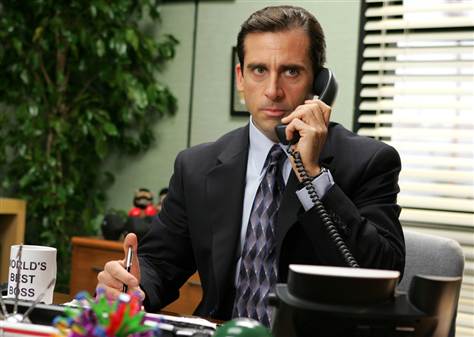

Currently in its eighth season, “The Office” is a television show about a group of workers in the small Scranton, Penn. branch of a dying paper company called Dunder Mifflin. Set in a mockumentary format, the show follows the lives of each of the workers as personalities clash, paper is sold and clients are lost within the isolated and seemingly self-sufficient world of their office.
Towards the end of the first seven seasons, the show had fallen into something of a comfortable (and hilarious) rhythm as bumbling branch manager Michael Scott, played by Steve Carell, and salesmen Jim Halpert and Dwight Shrute, played by John Krasinski and Rainn Wilson, respectively, formed the perfect comedic trio to lead the show, playing pranks on each other and constantly getting in the way of each other’s success. Towards the end of the seventh season, however, fans of the show were forced to watch Michael Scott step down from his position as branch manager to move to Chicago with his new fiancé, Holly Flax, played by Amy Ryan. As it turned out, Carrell’s contract with the show had expired and he decided he wanted to move on to other projects.
The next few episodes of the show made it clear that the writers of “The Office” were struggling alongside their characters with how to reconstruct the dynamics around the gaping hole left behind by Carell’s absence. This post-Carell phase of the show was loaded with guest stars like Will Ferrell, Jim Carrey and Ricky Gervais, playing individuals vying for the now-open position of branch manager in Scranton. These episodes lacked the painfully awkward but cleverly absurdist vernacular that had become such a natural part of “The Office” — the episodes seemed confused and lacked direction. It was clear that the show’s writers were just as lost as the committee of characters working together to fill Scott’s spot, and it took a serious toll on the show.
Season eight shepherded the cast and plot back to the classic Office feel, however, as a command decision was made to slot salesman and series regular Andy Bernard, played by Ed Helms of “The Hangover,” into the position of regional branch manager. It may have been off-putting for regular viewers at first, seeing as Helms had never been very central to the show. However, the next few episodes of season eight see him coming into his own in his new role, as the rest of the workers in the office work with and around him to fall into a new-but-just-as-comfortable rhythm as they had once been in with Carrell. Helms successfully balances his character’s goofy naïveté with his post-Cornell smarts to create a new believable leader — who, although less awkward than Carell, is equally ridiculous —for the characters of “The Office.” Viewers also see the return of James Spader in his role as Robert California, the new CEO of Sabre-Dunder Mifflin, whose ridiculously quirky and haughty manner enriches the show, provoking incredulous glances towards the camera on the part of Krasinski that had become so familiar in the Carell era.
Although the show has seen several dramatic changes within the past few episodes, viewers can appreciate the continued growth of the characters, as Jim Halpert and Pam, played by Jenna Fischer, prepare to have another child; Dwight deals with his farm (“Schrute Farms”) and various other schemes while constantly and unknowingly pranked by Jim; and Angela, played by Angela Kinsey, copes with her pregnancy and her tragic marriage with “The Senator.” Not only have the plotlines continually improved over the course of the latest season, but the grade-A acting of each and every one of the cast members has shined through as they have proven their ability to hold their own in the absence of Carell’s leadership. Viewers had to suffer through a rough patch after the loss of Carell, but those who hung on have and will continue to be well-rewarded as “The Office” gracefully proves its ability to stand alone as a comedy without having to lean on the star power of a single actor.